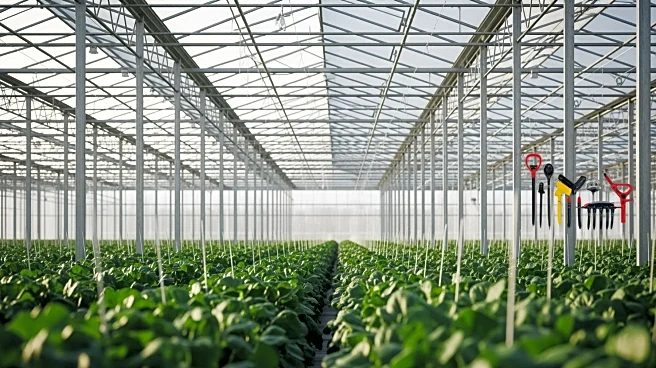What's Happening?
The United States agriculture tires industry is expected to experience substantial growth by 2025, according to a report by DataM Intelligence. The report highlights key market trends, growth drivers,
and competitive landscape, providing insights into the sector's future. The agriculture tires market was valued at $10.38 billion in 2022 and is projected to reach $15.93 billion by 2031, with a compound annual growth rate (CAGR) of 5.5% from 2024 to 2031. Recent industry developments include Michelin's introduction of fuel-efficient agricultural tires and Titan International's expansion to meet rising demand. Government incentives are also encouraging the adoption of eco-friendly tires to reduce farm equipment downtime.
Why It's Important?
The projected growth in the agriculture tires industry is significant for U.S. agriculture, as it indicates increased demand for durable and efficient tires that can enhance farming productivity. This growth is driven by advancements in tire technology, such as low soil compaction and fuel efficiency improvements, which are crucial for modern precision farming. Companies that adapt to these trends stand to benefit from increased market share and revenue potential. The expansion of manufacturing capacities and government incentives further support the industry's growth, potentially leading to more sustainable farming practices and reduced environmental impact.
What's Next?
As the agriculture tires market continues to grow, companies are likely to focus on innovation and strategic partnerships to capitalize on emerging opportunities. The adoption of smart tire technologies and sustainable recycling initiatives may become more prevalent, driven by consumer demand and regulatory pressures. Additionally, the expansion of distribution networks and technological innovations in tire design could further enhance market penetration. Stakeholders, including tire manufacturers and agricultural equipment companies, will need to navigate these changes to remain competitive and meet evolving customer needs.












